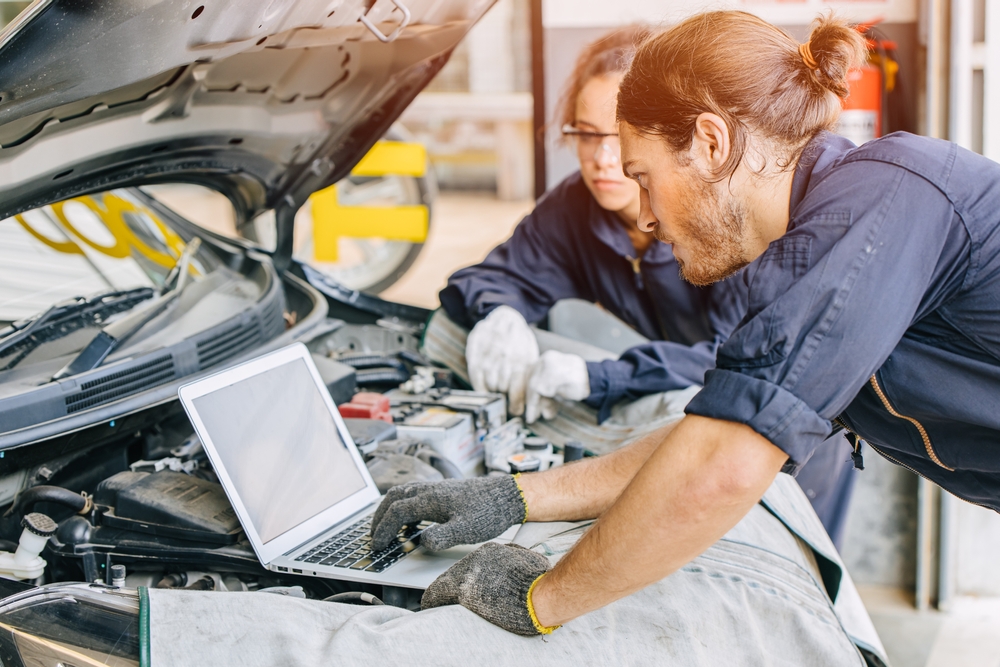
Everyone loves the idea of making their car faster, sleeker, or more luxurious. But many so-called “upgrades” end up draining your wallet without improving performance, safety, or resale value. In fact, some modifications can even reduce your car’s reliability or void your warranty. Before spending another dime on unnecessary mods, it’s worth knowing which ones cost more than they’re worth. Here are 13 car upgrades that waste money without adding real value.
1. Oversized Rims and Low-Profile Tires
While they may look aggressive, oversized rims can hurt your ride quality and wallet. Larger wheels add weight, which reduces acceleration and fuel efficiency. Low-profile tires also make for a rougher ride and are more likely to get damaged on potholes. Replacement costs for custom wheels and tires are much higher than stock options. Unless you’re entering a car show, this upgrade offers looks, not value.
2. Aftermarket Exhaust Systems
Many drivers install aftermarket exhausts hoping for better performance or sound. The truth is, most modern engines already operate near peak efficiency, so gains are minimal at best. Loud exhausts can actually lower resale value and attract unwanted attention from law enforcement. In some states, overly noisy systems can even result in fines. You’re paying for noise, not horsepower.
3. High-End Audio Systems
A premium sound system can make your commute more enjoyable, but it’s one of the most common car upgrades that wastes money. Adding expensive subwoofers or amplifiers doesn’t increase your car’s resale value. In fact, buyers often prefer factory setups for simplicity and reliability. These systems can also drain your car’s battery or cause electrical issues if installed poorly. Unless you’re an audiophile, the return isn’t worth the cost.
4. Custom Paint Jobs
A flashy custom paint job might turn heads, but not in a good way for resale value. Non-factory colors can limit your pool of buyers and often fade faster than manufacturer finishes. Repairing or touching up custom paint is also far more expensive. Plus, insurers may charge more to cover custom work. Stick with your car’s factory color if you want to protect its long-term worth.
5. Performance Chips and Tuners
Performance chips promise to unlock hidden horsepower, but results rarely match the marketing hype. Many chips simply adjust your air-fuel ratio, which can strain your engine and void your warranty. Gains of 5–10 horsepower are common, but at the risk of higher wear and tear. Factory-tuned vehicles are optimized for reliability and efficiency, not maximum output. Unless you race professionally, these chips aren’t worth the gamble.
6. Spoilers and Body Kits
While some spoilers improve aerodynamics, most aftermarket ones are purely decorative. Cheap body kits often reduce ground clearance and can crack easily. They might look sporty, but they won’t enhance handling unless properly engineered and installed. Many even disrupt your car’s airflow, making it less efficient. Ultimately, these upgrades add flash but no financial return.
7. Window Tinting Beyond Legal Limits
Tinting can protect your interior and improve comfort, but going too dark invites trouble. Many states have strict laws regulating window tint percentages. Illegal tints can lead to costly tickets and mandatory removal fees. Even legal tints can bubble or fade if installed with cheap film. Keep it tasteful (and compliant) to avoid paying twice.
8. LED Light Bars and Underglow Kits
Extra lighting might make your car stand out, but it’s one of the most unnecessary car upgrades that wastes money. Light bars are often illegal for street use, and underglow kits quickly look dated. These accessories drain your battery and can cause electrical faults if wired incorrectly. Police in many states issue citations for non-standard lighting. Save your cash, and your car’s wiring harness.
9. Cold Air Intakes
Cold air intakes are popular among enthusiasts, but they rarely provide noticeable benefits for modern cars. Most factory systems already maximize airflow efficiently. Installing an aftermarket intake may trigger check-engine lights or void warranties. The minimal power gains don’t justify the cost or potential engine issues. It’s more sound and appearance than actual performance.
10. Custom Interiors
Leather upgrades, carbon-fiber trim, and ambient lighting can personalize your cabin, but rarely recoup costs. Most buyers won’t pay extra for your taste in décor. Worse, over-customizing can make your vehicle harder to sell. If you want comfort, focus on affordable touches like seat covers or floor mats instead. Save luxury upgrades for your dream car, not your daily driver.
11. Lift Kits and Lowering Springs
Modifying your suspension may improve looks or off-road ability, but it often compromises daily drivability. Lift kits raise your center of gravity, making turns less stable. Lowering springs can ruin ride comfort and wear out tires faster. Both can interfere with safety features like traction control. These modifications tend to please the eye but punish your suspension.
12. Fake Performance Accessories
Items like hood scoops, fake vents, or stick-on spoilers add zero functionality. They’re purely cosmetic, and usually obvious to other car enthusiasts. These additions can cheapen your car’s appearance rather than enhance it. Buyers often see them as signs of poor taste or neglected maintenance. If you want your car to look fast, keep it clean and well-maintained instead.
13. Overpriced Detailing Packages
Dealerships often sell “protection packages” promising paint sealants, fabric guards, or lifetime wax coatings. In reality, these treatments are just glorified wax jobs that cost hundreds more than they should. Regular washing and waxing at home achieves the same effect for a fraction of the price. Extended detailing packages also do little for resale value. Protect your wallet, not just your clear coat.
Spend Smart, Not Flashy
The best car “upgrade” is proper maintenance, like oil changes, tire rotations, and quality parts. Flashy add-ons might feel satisfying, but they rarely pay off in performance or resale value. The smartest drivers know that value comes from reliability, not gimmicks. Before spending big, ask: Does this improve function, or just look cool? In most cases, your money is better spent keeping your car in top shape.
Have you made a car upgrade that you later regretted? Share your experience with others in the comments below.
What to Read Next
- 11 Classic Car Restorations Worth Every Penny
- 7 Ways Your Car Is Secretly Warning You to Quit While You’re Ahead
- 3 Cars Experts Say Could Skyrocket in Value Soon
- Love Classic Cars? Experts Say These 8 Models Will Break Your Heart (and Wallet)
- How Often You Should Really Wash Your Car—According to a Former Detailer
The post 13 Car Upgrades That Waste Money Without Adding Value appeared first on Clever Dude Personal Finance & Money.







